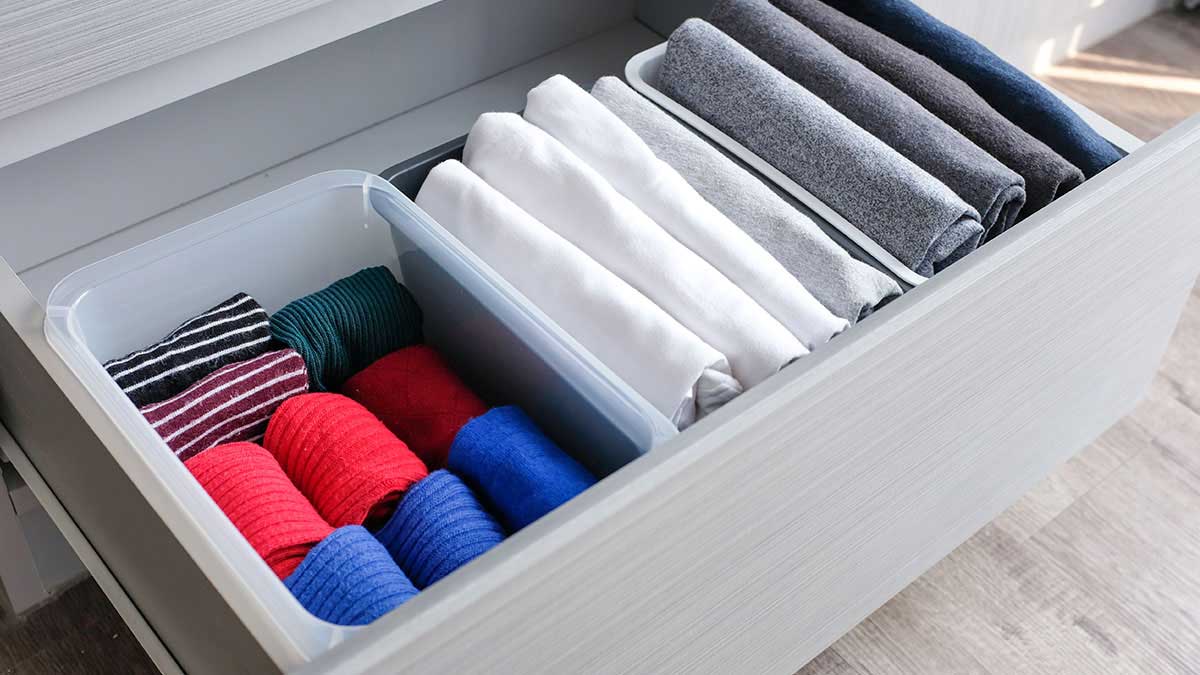
Eight Resolutions for Your Home
By Marisa Johnson Posted 3/1/2020 in LIFESTYLES
Give your home the same fresh start that you want for yourself. Here are eight ideas to give new life to your home.
Why do we make New Year’s Resolutions? There is a lot to it, but let’s boil it down to the essence. We make New Year’s Resolutions because we want to improve our lives. Every year, we set resolutions for how we want something different in some area of our lives. We cover almost everything, but one thing we often overlook is our home. It’s important to show your home the same love and care you show every other aspect of your life. Give your home the same fresh start that you want for yourself. The changes don’t need to start with the new year, but in the spirit of New Year’s Resolutions, here are eight ideas to brighten and give new life to your home.

1. Freshen Up Your Walls
Give your walls a fresh new look. You can apply this idea in different ways. It can be as simple as decorating changes or for a completely different look a change of color with a new coat of paint. If you have framed pictures on your wall, try changing out the art or photographs.
Another option is simply changing what pictures are displayed and where. With painting, there are so many options of paint to choose from. Choose colors that make you happy. Professional painters can help you find color options you may never be able to find yourself. Spice things up by choosing bright, cheerful colors rather than sticking to plain vanilla white walls. You don’t need to shock your system. Even small changes can make a room seem new and alive again.

2. Minimize Messy Clutter
You would be surprised at how much unneeded stuff you can accumulate in just one year. Review what you have at least once a year. Don’t plan on reviewing every drawer in one month. Make it a new habit to go through a drawer or two a month. Minimize the mess by clearing out closets and drawers of unwanted and unused items. You might want to focus on one room at time until you feel you’ve covered it. It’s fine if that one room takes a few months to finish. Picking one room at a time will help you see results and give you a sense of accomplishment when you finish. That sense of accomplishment will help motivate you to move on to other areas of the house.

When you are taking inventory of what you have, ask yourself a few key questions. When is the last time I used this? Is it likely I’ll use it in the future? If I need it, where will I be? Would be better to store this somewhere else? When you find unneeded items, you don’t have to throw them away. You can donate these items to charity and receive a tax write-off. You can sell them online or have a garage sale. You’ll be surprised how often you find things you needed in the past but couldn’t find when you needed it. Even if you keep everything it’s good to have it organized and to know where everything is. When you do part with a few items you and your family will be better able to find the things you do need when you need them.

3. Develop a House Cleaning System
By outlining an organized plan for cleaning your home on a regular basis, you’re more likely to clean, and you’ll see a number for satisfying benefits. You can eliminate much of the stress and worry when uninvited guests arrive unexpectedly. Studies show that those who clean regularly are less frequently sick, and sick for shorter periods of time. For those sensitive to cleaning chemicals there are alternatives cleaning products that can be used. Perhaps more importantly studies show a cleaner house will make you happier.
Stay organized by keeping all your cleaning supplies in one carryall that can travel with you from room to room. Wear a builder’s apron with lots of pockets while you clean. An apron where you can stash plastic bags, sponges, and little pieces of trash. You might think you look funny, but you’ll be surprised how much time it saves. Think of those times when you’ve made a quick run to the trash can to throw away some little thing and then find more of it or something different to clean up only few minutes later.
Focus on one type of cleaning task at a time. For example, wiping down all the cabinets first before moving on to wiping down all the countertops. Divide and conquer by splitting the work three ways among family members. Cleaning does not have to difficult.Sometimes it’s as easy as dropping a cleaning product in the toilet tank or washing machine. One person deep cleans the bathroom, one person scrubs the kitchen, and the third person dusts, vacuums, and takes out the trash. You can alternate these tasks to make things fair. Plus, you can get everything done quicker, which gives everyone more time to enjoy the things they love most. The irony of cleaning regularly is that it makes it easier and quicker to clean up the unexpectedly messes when they happen.

4. Perform a Home Safety Check
Never set aside your personal safety and safety of your family when it takes minimal time to do an annual home safety check. Make sure your carbon monoxide and smoke detectors are working properly by changing out the batteries and testing. Check the manufacturing dates on the devices. Replace carbon monoxide detectors that are over five years old and smoke alarms that are over ten years old. You should also have at least one carbon monoxide detector for each level of your home and a smoke alarm in the hallway, attic, basement, and each bedroom.
If you don’t have a fire extinguisher, you might consider one for each floor of your house. Check all electrical products that constantly remained plugged in. You’ll be surprised at how often a missing sock is behind a nightstand or dresser resting on a plug where it connects to an outlet. Anything resting on electrical wiring can be dangerous. It only takes a few minutes every year to check, and when you correct a potentially dangerous situation you will be glad you did.

5. Update Your Emergency Kit
It seems like natural disasters are happening more frequently and with greater severity. While we suggest you maintain a positive outlook, it is important to make sure your family is ready for emergencies when they happen by updating your first aid and disaster kits. Always maintain enough water for each family member and pet for at least three days. Rotate the water out as you use it, but plan on a default quantity at hand instead waiting until you are out to buy more. While unexpected or unwarned events are rare, it takes little effort to have some extra water on hand.
Even if you prefer fresh foods, it’s a good idea to keep some canned food on hand as well. Many foods like crackers and peanut butter will stay good for weeks without refrigeration. It’s a good idea to keep products like these in the home at all times.
Keep a small emergency bag packed and set aside for each family member. This is just something small with a few critical items that can be grabbed quickly. Keep a few key items such as needed medication in the bag. While your doctor or pharmacist are unlikely to approve an extra supply of medicine, you can normally reorder a prescription a few days ahead of time. Keep an extra bottle of each medication with enough to cover you for 3 or 4 days. Change out the emergency supply every time you pick up a new prescription to make sure you maintain a fresh supply.
The same idea applies to batteries. Batteries slowly drain whether you use them or not. Replace your emergency supply at least once a year. You don’t need to throw out the old batteries, just use them for other things. It’s a good idea that everyone in the family has an emergency flashlight. For items like a radio, or a can opener you should have them, but one of each should be enough for the whole family. While almost everyone has at least a few boxes of band aids in the house it’s a good idea to have at least one first aid kit with a variety of items such as gloves, wound cleanser, antibacterial ointment, gauze, tape, tweezers, eye wash, acetaminophen or ibuprofen, etc.. You can find a small kit for as little as $10 and many people find one kit will last them 20 years.

6. Get Energy Efficient
know, I know. Everyone keeps talking about it and the more they do the less you want to do anything about it. Let’s look at it as a question of money. Doing a few key things can significantly lower your energy bill each month.
Start by cutting down on heating and cooling costs by installing a programmable thermostat in your home. Turn off lights each time you leave a room and shut off the furnace or air conditioner when you leave the home. Check your furnace on a monthly basis and clean or replace the filters.
Use thick curtains for insulation during the winter and summer months. Also make sure doors and windows are properly sealed. All these things will save you money, and you’ll be surprised by how much. Energy costs go up every year. Make note of monthly bills now, make the suggested changes, and check your bill next year. Even with rising energy costs you can easily see your bills go down with a few simple changes.

There are other changes you can make that will require an investment but can lead to greater long-term savings. For example, you can use smart home technology to control your thermostat and lights remotely to cut down on energy costs. Install LED light bulbs, refresh your ceiling insulation, and replace single pane windows with insulated ones. Turn off power supply strips when attached appliances or electronic gadgets are not in use. All of these things add up the savings. In some cases, you’ll find you save hundreds of dollars every year.

7. Check Your Home for Need Maintenance and Repairs
Finding problems with your home early can remove a lot stress and save you a substantial amount of money. It’s less expensive to fix minor problems before they become bigger, more expensive problems.
Check your roof and look at your plumbing and air conditioning coils as well as your furnace for potential leaks. If you have easy access to your attic or crawl space, use a flashlight and take a quick look. If you are uncomfortable doing, so many companies are willing to do reasonably inexpensive maintenance reviews.
Look for signs of rodent activity and other things such as termites or carpenter ants. You will also want to look for mold growth as well as cracks appearing in your foundations. When you find the problems early, you can plan for repairs and set money aside for the project. In addition, you can avoid the extra charges frequently associated with emergency jobs, which are sometimes double or triple regular repair costs.

8. Get Financially Ready for Renovation
In the United States, about 85% of homes were built before 1980 and require home improvement. According to the National Association of Realtors, about 34% of new homebuyers looked to avoid potential plumbing and electricity renovations and problems. Making major updates may require some extra cash you don’t have readily on hand.
If saving up for the project isn’t an option, you can go to the bank and request a loan to help you make the repairs. Banks offer cash-out refinance and second mortgage options using the home as collateral. Make a list of the repairs that need the most attention. Do your research and get estimates on repair costs so you can figure out how much money you will need for a loan. Only take out as much as you can reasonably afford to pay back.

Most of us spend more time at home than anywhere else. Our home is special, and we should treat it that way. We hope the eight ideas above will add to your enjoyment of you home and save you a little money.
While you are making goals for yourself, consider what goals are most important for your home as well. Your home reflects you. Take care of your home and take care of yourself. Be proud of your home, and proud of yourself.












